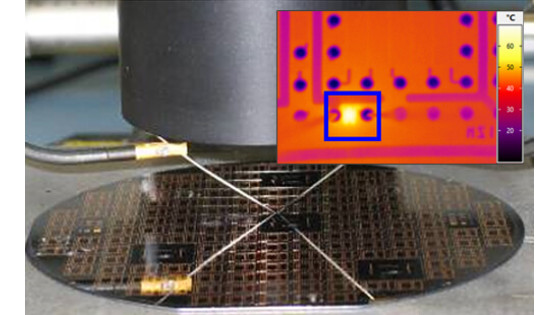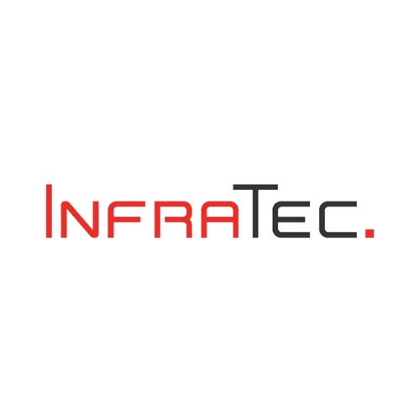

Thermography on the Trail of the Fault - Non-destructive Failure Analysis on Electronic Components
Today, thermographic damage and function analysis of electronic components is an established test method in electrical engineering. This method is also used for research purposes at the Institute for Electrical Systems and Energy Logistics at BTU Cottbus-Senftenberg. In this context, Prof. Dr. Ralph Schacht is intensively involved with the material and system characterisation as well as the non-destructive failure analysis of printed circuit boards, electronic components, microelectronics as well as composite systems of packaging and interconnection technology. The ImageIR® 8300 infrared camera from InfraTec is one of the devices used for this purpose.
Non-destructive testing (NDT) – in contrast to destructive component testing – implies that the test application must not influence or reduce the usability of the test object in any way. Thermal imaging is a non-destructive, very efficient method. It enables the imaging detection of thermal radiation as well as the interpretation of the observed surface temperatures.
At the Institute of Electrical Systems and Energy Logistics at the BTU Cottbus-Senftenberg, non-destructive component testing is carried out using various thermography methods: passive IR thermography, active IR pulse thermography and active IR lock-in thermography. The infrared camera used for this purpose is the ImageIR® 8300 from InfraTec with a M=3x magnification microscope lens or a macro attachment. The measurements are evaluated with the IRBIS® 3 thermography software belonging to the camera and the additional module IRBIS® 3 active.
Passive IR Thermography
With this method, electrical "short-circuit currents" are selectively injected into the assemblies to be tested. This can lead to increased current flows in faulty areas, which in some cases trigger the slightest temperature changes there and can be detected using thermography. Short-circuit tests of electrical through-hole platings in printed circuit boards (PCB) serve as an example here. Due to the possibility of evaluating the differential image within the IRBIS® 3 thermography software, the contact point can be precisely localised in real time.
Rede more: https://www.infratec.eu/thermography/thermography-on-the-trail-of-the-fault/
Do you have questions about this case study?
Get in touch with InfraTec GmbH Infrarotsensork und Messtechnik, and they would be happy to answer any questions you have about pricing, suitability, availability, specs, etc.



![Do-Giant-Tortoises-Make-Good-Neighbors-1[1].jpg](https://cdn.geo-matching.com/vRMO2Edp.jpg?w=320&s=a6108b2726133ff723670b57bc54c812)



